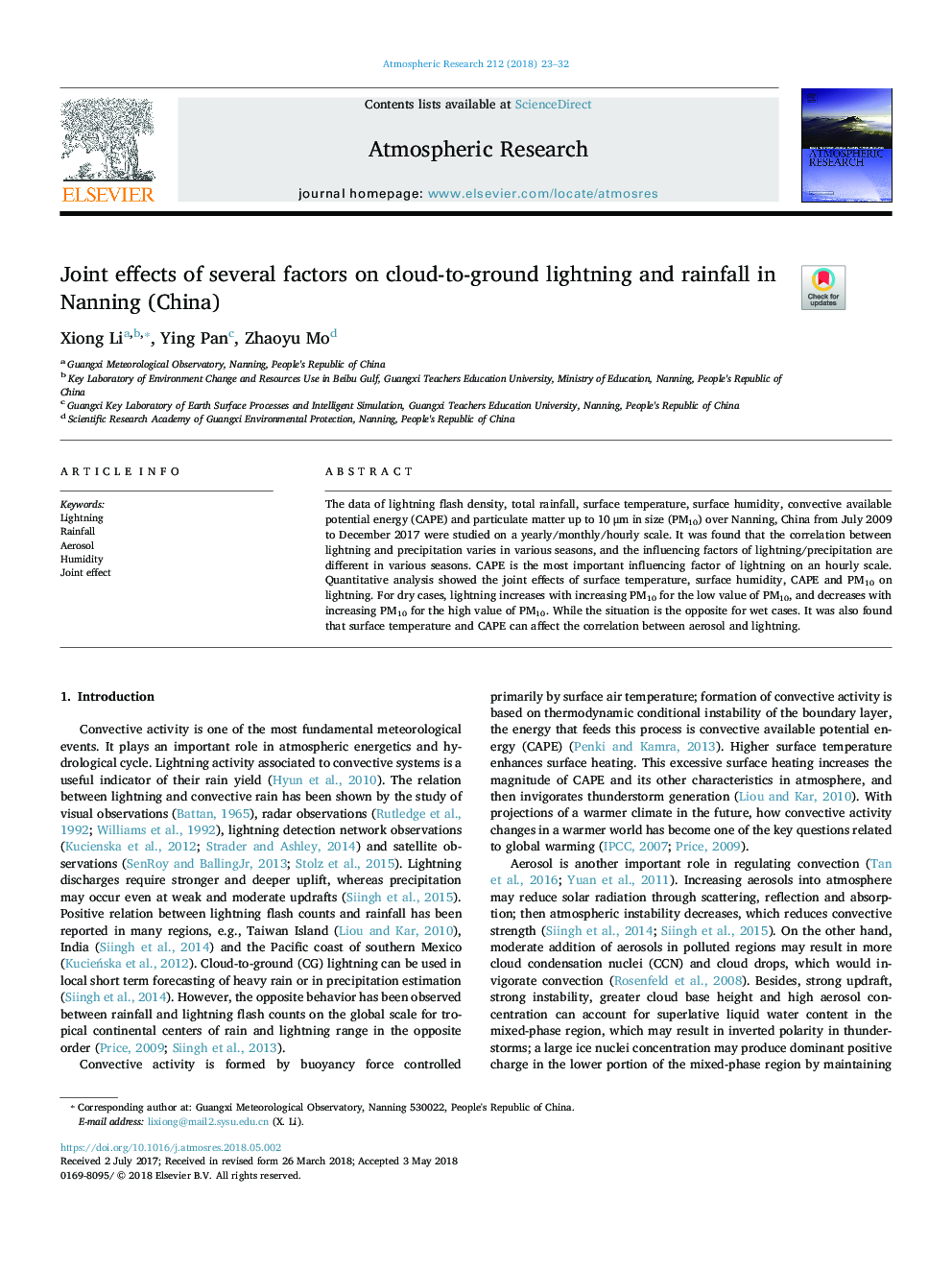| Article ID | Journal | Published Year | Pages | File Type |
|---|---|---|---|---|
| 8864492 | Atmospheric Research | 2018 | 10 Pages |
Abstract
The data of lightning flash density, total rainfall, surface temperature, surface humidity, convective available potential energy (CAPE) and particulate matter up to 10â¯Î¼m in size (PM10) over Nanning, China from July 2009 to December 2017 were studied on a yearly/monthly/hourly scale. It was found that the correlation between lightning and precipitation varies in various seasons, and the influencing factors of lightning/precipitation are different in various seasons. CAPE is the most important influencing factor of lightning on an hourly scale. Quantitative analysis showed the joint effects of surface temperature, surface humidity, CAPE and PM10 on lightning. For dry cases, lightning increases with increasing PM10 for the low value of PM10, and decreases with increasing PM10 for the high value of PM10. While the situation is the opposite for wet cases. It was also found that surface temperature and CAPE can affect the correlation between aerosol and lightning.
Related Topics
Physical Sciences and Engineering
Earth and Planetary Sciences
Atmospheric Science
Authors
Xiong Li, Ying Pan, Zhaoyu Mo,
